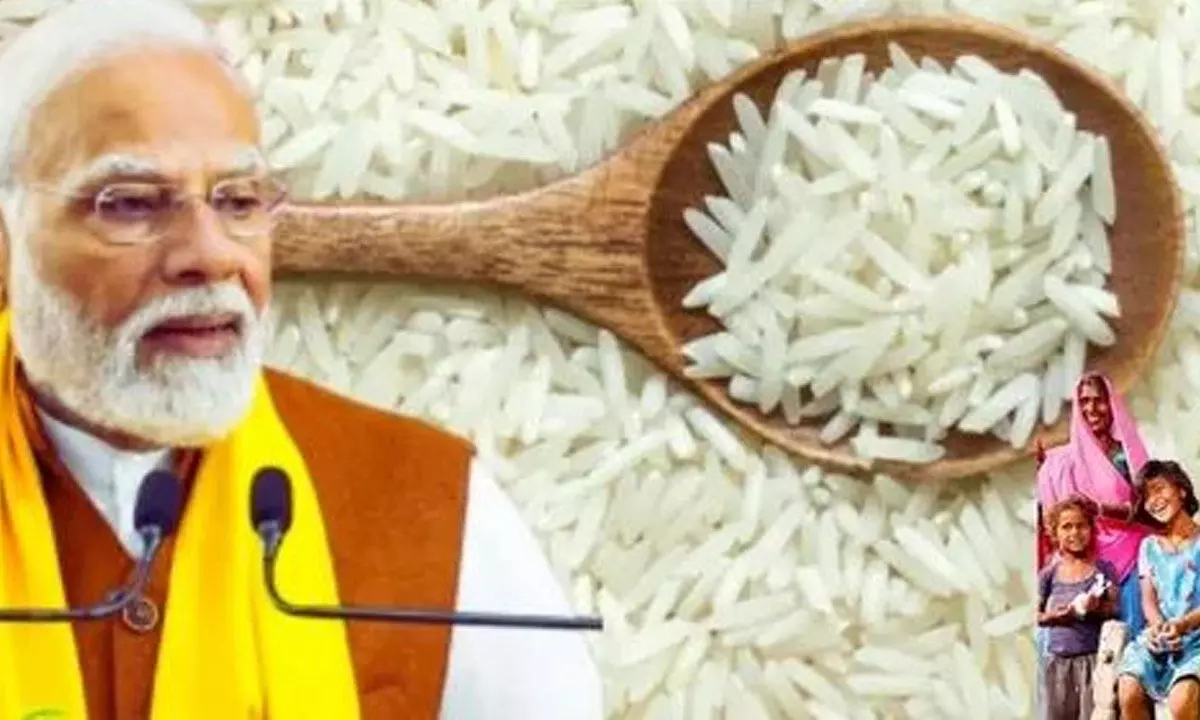Free Fortified Rice for a Healthier India

“There was a time when India’s food security was a global concern, today India is providing solutions for global food and nutrition security” - Prime Minister Narendra Modi.
“There was a time when India’s food security was a global concern, today India is providing solutions for global food and nutrition security” - Prime Minister Narendra Modi. During India’s 75th Independence Day, Prime Minister Narendra Modi emphasised the need to combat malnutrition, underscoring that every citizen, especially the underprivileged, deserves access to nutritious food for a healthier, stronger India. In line with this vision, committed to ensuring the holistic nutritional well-being of the people, the Union Cabinet recently gave its approval to distribute fortified rice under all government schemes. It marks a significant milestone in realizing the Prime Minister’s vision for a malnutrition-free India.
The Cabinet has taken a pivotal decision to extend the universal supply of fortified rice under all government welfare schemes, including the Pradhan Mantri Garib Kalyan Anna Yojana (PMGKAY), from July 2024 until December 2028. It approved of the implementation of the Rice Fortification initiative under the various schemes of the government as a central sector initiative to be 100% funded by the Government of India. The existing mechanism of meeting the cost towards the supply of fortified rice as a part of PMGKAY (Food Subsidy) under the already approved allocation of ₹11,79,859 crore of the PMGKAY Scheme has been given go-ahead.
This initiative aims to provide vulnerable populations with enhanced nutrition by distributing fortified rice enriched with essential micronutrients such as iron, folic acid, and vitamin B12. The distribution will follow the standards set by the Food Safety and Standards Authority of India (FSSAI).
According to the World Health Organization’s meta-analysis, rice fortification can reduce the risk of iron deficiency by 35%. With an estimated annual outlay of Rs 2,565 crore, this initiative has the potential to avert 16.6 million Disability-Adjusted Life Years (DALYs) per year, resulting in healthcare savings equivalent to Rs 49,800 crore in GDP terms.
Since the launch of the rice fortification pilot scheme in 15 states in 2020, the programme has seen significant progress. Between 2019-20 and March 31, 2024, approximately 406 lakh metric tonnes of fortified rice were distributed through the PDS, enhancing the nutritional intake of millions across the country.
In February 2016, the MoWCD (Ministry of Women and Child Development) highlighted rice fortification to combat malnutrition and anaemia, focusing on children, pregnant women, and lactating mothers, with involvement from key stakeholders like Ministry of Health and Family Welfare (MoHFW), Food Corporation of India (FCI), National Institute of Nutrition (NIN), Indian Council of Medical Research (ICMR), and the Food Safety and Standards Authority of India (FSSAI). A task force by the Ministry recommended mandatory rice fortification in government programs via FCI, with phased implementation in May 2016.
In March 2024, 100% coverage of the distribution of fortified rice has been achieved, and custom-milled rice has been replaced with fortified rice under all government schemes. Custom-milled rice has been replaced with fortified rice in every scheme of the Government and 100% coverage of distribution of fortified rice has been achieved by March, 2024. Fortification is the process of enriching food with essential micronutrients, such as vitamins and minerals, to improve its nutritional value. Food fortification has been used globally as a safe and effective measure to address anaemia and micronutrient malnutrition in the vulnerable population. According to the 2008 Copenhagen Consensus, food fortification is one of the top three priorities for developing nations and plays a vital role in combating malnutrition.
In India, fortification has proven successful in the past. For instance, iodized salt has significantly reduced iodine deficiency and diseases like goitre.
According to the National Family Health Survey (NFHS-5) conducted between 2019 and 2021, anaemia remains a prevalent issue in India. In addition to Iron deficiency, other vitamin-mineral deficiencies such as Vitamin B12 and Folic acid continue to co-exist and affect the health and productivity of the population. To address these challenges, the government has undertaken significant steps, including the distribution of fortified rice. Why rice? Because in India, rice is a staple for 65% of the population. (PIB)
















